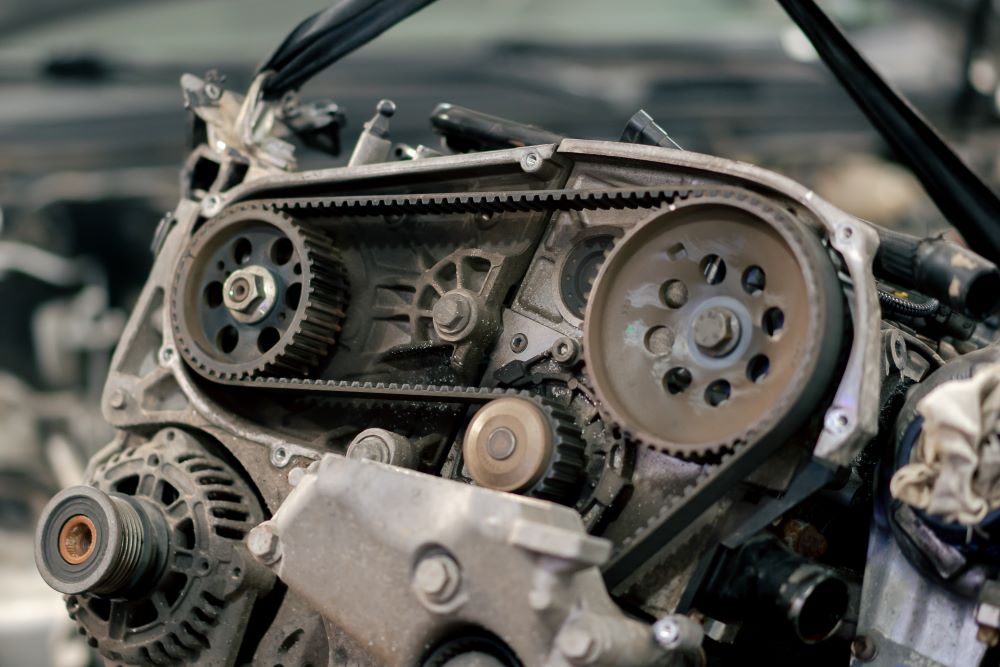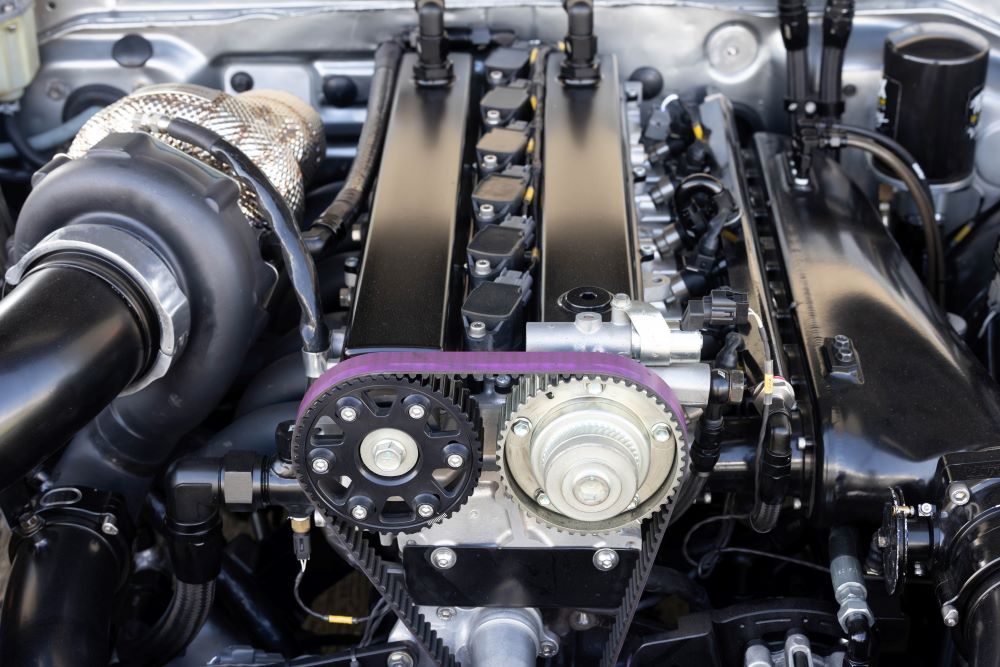How Do I Know I Need A New Timing Belt
How Do You Know When You Need a New Timing Belt?
Your car’s timing belt plays a crucial role in keeping the engine running smoothly. Ignoring problems with it can lead to expensive and even irreversible engine damage. Here’s everything you need to know about timing belts, why they matter, and when to replace them—explained simply and clearly.

What is a Timing Belt?
Ever wondered what a timing belt is and why it’s so important? Simply put, a timing belt is a tough, reinforced rubber belt that keeps key engine parts working in perfect sync. It connects the crankshaft and camshaft, ensuring your engine’s valves and pistons move in harmony. This precise timing is what allows your engine to run smoothly and efficiently.

What Does a Timing Belt Do?
The timing belt’s job is crucial—it manages the opening and closing of valves, controlling the flow of air and fuel into the engine while expelling exhaust gases. Without it, things can go seriously wrong. If the timing is off, parts can collide, leading to misfires, reduced performance, or even major engine damage.
Taking care of your timing belt is a must! Regular inspections and timely replacements are key to keeping your engine in top shape and avoiding costly repairs down the road.
Here is a video with more information: Gates® Australia - Protect The Ride™: Worn Timing Belts

Signs You Might Need a Timing Belt Replacement
The Engine Won’t Start
If your car isn’t starting, it could be due to a worn-out timing belt. You might hear the starter motor working, but the engine itself won’t turn over. At this stage, the engine might already have sustained damage. If this happens, call a mechanic immediately.
Ticking or Clicking Noises
A healthy timing belt shouldn’t make any unusual noises. If you hear a ticking or clicking sound from your engine, it could be a worn timing belt. Other sounds like screeching or whirring when you start the engine, accelerate, or idle might also be a warning sign. To avoid further damage, have a mechanic check it out as soon as possible.
Engine Misfires or Runs Rough
If your engine feels shaky, bounces when idling, or has uneven RPMs, it could be a sign of timing belt problems. A worn or loose belt might slip, causing the engine’s timing to be off, leading to misfires. Misfires are serious and can damage your engine if left unchecked. If your engine is behaving erratically, it’s best to visit a mechanic right away.
Your Car’s Age
Over time, timing belts naturally wear out, even if you don't drive your car much. The rubber material weakens and breaks down as it ages. Following your car manufacturer's recommended replacement schedule is the best way to keep your engine in good working order.
Check out this quick video: Gates® Australia - Protect The Ride™: Common Timing Belt Issues
More Information
How Much Does a Timing Belt Replacement Cost?
Timing belt replacement can be expensive, and if you’re unfamiliar with it, the price might take you by surprise. However, delaying this essential maintenance can lead to far more costly problems. A worn or broken timing belt can cause catastrophic engine damage, resulting in repairs that are significantly more expensive than simply replacing the belt on time.
When your mechanic advises you to replace your timing belt, don’t ignore it. While the upfront cost might seem high, it’s a smart investment that prevents bigger issues down the road, ensuring your engine remains reliable and efficient.
How To Check Timing Belt?
Checking your timing belt is an important part of maintaining your engine’s health, but it’s not always straightforward. Over time, the belt can wear out, showing signs such as cracks, fraying, or glazing. To inspect it, you’ll need to locate the timing belt cover, remove it, and visually check the belt for damage. However, this can be tricky since the timing belt is often difficult to access.
For most car owners, it’s best to have a professional mechanic inspect the timing belt during routine maintenance. They have the expertise and tools to assess its condition accurately and recommend replacement if needed. Regular checks can save you from unexpected failures and costly repairs.
How To Replace a Timing Belt?
Replacing a timing belt is a complex process that requires precision and technical know-how. The timing belt is a crucial component that keeps the engine’s camshaft and crankshaft synchronized, and any mistake during replacement can result in serious engine damage.
The process involves removing various engine parts, including the timing belt cover, old belt, and sometimes even components like the water pump. The new belt must then be installed with exact alignment to ensure proper timing. Given the complexity, most experts recommend having a qualified mechanic handle this job.
While it might be tempting to save money with a DIY approach, improper installation can lead to costly engine issues. Trusting a professional ensures the job is done right, giving you peace of mind and protecting your engine in the long run.
FAQs
How long does a timing belt last?
Most timing belts are built to last between 60,000 and 160,000 kilometers, depending on your car and driving conditions. Check the log book for more details on when. Newer belts made with advanced materials may last even longer.
Can I change the timing belt myself?
While it’s possible, replacing a timing belt isn’t a beginner-friendly task. You’ll need the right tools, a detailed guide, and some mechanical know-how. If you’re unsure, it’s best to leave it to a professional.
What’s the best material for a timing belt?
Polyurethane timing belts are a great option. They’re more elastic than traditional rubber belts, can handle extreme temperatures, and are resistant to oil, fuel, and chemicals—making them durable and reliable.
Time for a New Timing Belt?
If you’re noticing issues with your car or it’s been a while since your last timing belt replacement, don’t wait. Getting it checked and replaced as needed can save you a lot of trouble and expense.
For those looking for high-quality options, check out Supercheap's range of durable timing belts. With a variety of materials available, you’re sure to find one that suits your car’s needs.
*Important information* - Click here to read more about our How-To terms and conditions.